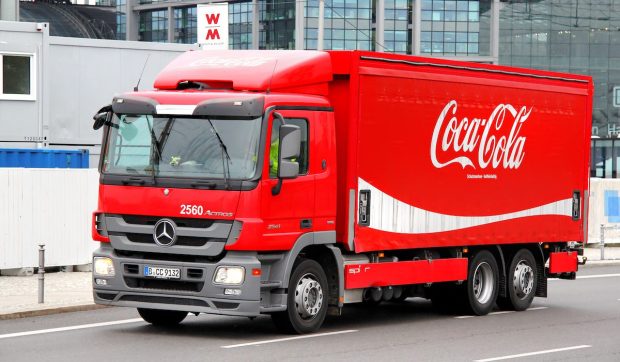Coca-Cola Says Europeans Buying Less as Americans Shop in Dollar Stores

Around the world, consumers are dealing with inflation, but not all areas respond the same way.
Beverage giant Coca-Cola shared on a call with analysts Tuesday (Feb. 14) discussing its fourth-quarter 2022 financial results that its predictions in previous quarters about how inflation would affect consumers’ grocery spending are beginning to come to pass.
The company had noted that at first, in times of economic difficulty, consumers cut back on big-ticket, discretionary purchases before cutting back on smaller purchases. Later, they make quality tradeoffs at the grocery store. Now, Coca-Cola is seeing these trends affect consumers’ food and beverage spending.
“You can clearly see that beginning to happen in a number of places,” Coca-Cola CEO James Quincey said on the call. “It would seem to us that Europe is probably the most obvious example, where in the at-home channel, you can see some growth in private label across a number of categories. In beverages you can see it pick up a little in water and juices.”
Across food and beverage brands and consumer packaged goods (CPG) companies, there are different reports of where consumer trade-down stands.
Lawrence Kurzius, CEO of spices and flavorings giant McCormick, said on the company’s most recent earnings call that shoppers are returning to name brands, with the firm seeing trade-down “moderate” while its lower-priced Lawry’s line has had consumers “trading up from private label.”
Conversely, CPG giant Colgate-Palmolive is seeing trade-down flatlining in some categories and continuing to grow in others, as the company shared on its fourth-quarter earnings call.
Procter & Gamble said earlier this month that trade-down is neither on the rise nor are consumers reverting back to name brands, but rather store brands’ market share held constant throughout the back half of 2022.
Coca-Cola, for its part, is seeing how shoppers respond to inflation vary depending on where that shopper is. In the United States, for instance, it is less a matter of switching to a lower-quality product at the grocery store than of changing retailers altogether, opting for discount stores.
“[There are] some signs of that [trade-down] in the U.S. with the dollar channels,” Quincey said. “So, that’s clearly the impact of inflation running ahead of wages starting to come through now that the summer is over.”
Research from PYMNTS’ study “Consumer Inflation Sentiment: Perception Is Reality,” which drew from a survey of more than 2,100 U.S. consumers in December, revealed that 69% of consumers have made changes to their grocery shopping lists in the last year in response to rising prices. Fifty-nine percent have reduced the quantities of items they are purchasing, and 35% have reduced the quality.
PYMNTS research also revealed that a greater share of U.S. consumers has switched to cheaper grocery merchants than have cut back on product quality. Findings from the October edition of the Consumer Inflation Sentiment study, “Consumer Inflation Sentiment: Consumers Buckle Down on Belt-Tightening,” based on a September survey, found 47% are switching to cheaper merchants.
These findings are in line with discount retailers’ observations that consumers are increasingly getting their groceries at dollar stores.
